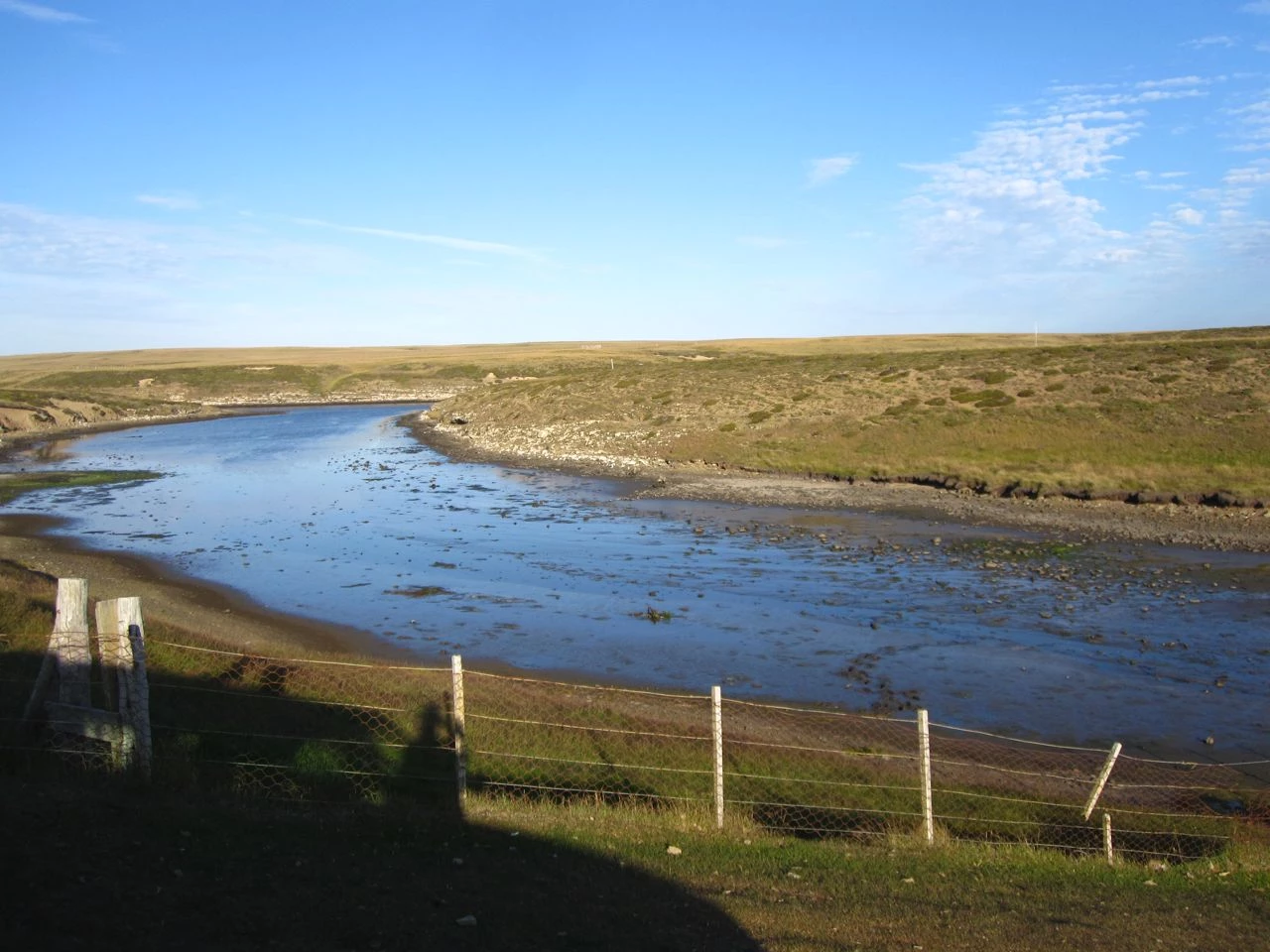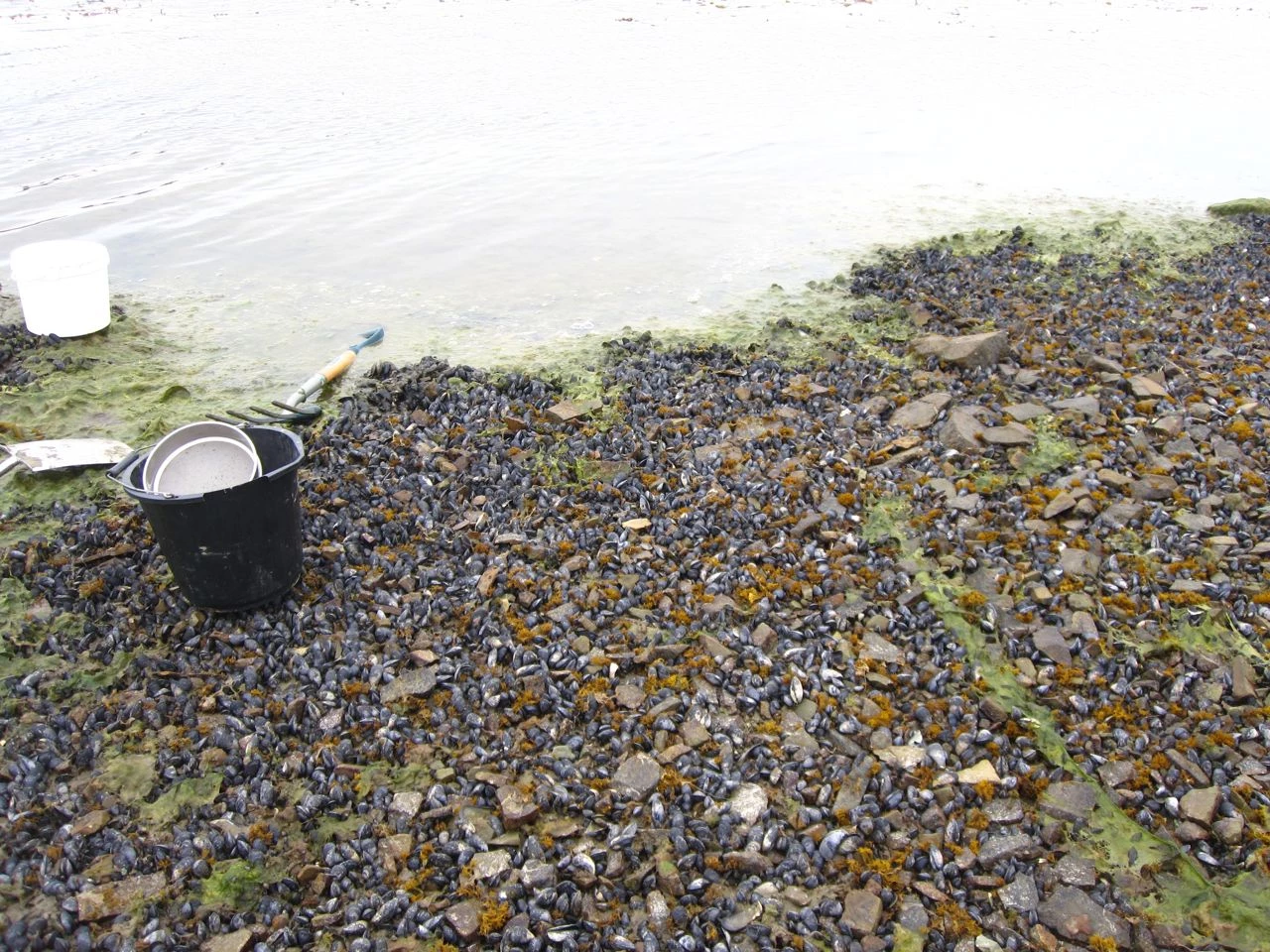Falkland Islands 2013: January 23rd update
, 23 January 2013
21.01.13
Yesterday (Monday) was probably the warmest day so far. Not necessarily the day you would pick for a dusty 3 hour drive across the island but that’s how it was. I was very thankful that the car had working air con as you can’t open the windows while driving unless you want the interior to be caked in half an inch of dust when you arrive. The timings of the tides meant that I would be able to catch both an evening tide and then a morning tide too, getting 2 sites done in the area. Unfortunately the tides at the moment are not the biggest so there is less beach exposed and available for sampling. Still at least I would get something - or so I hoped - North Arm turned out to be a very poor site for polychaetes indeed.
Monday night I picked a small creek just before the settlement (Photo 1). Rocky around the edges, the sheltered aspect meant that much of it was made up of very soft muddy sediment, the kind your boot sinks into and then stays. However, I found I could move around so long as I didn’t stay still too long but despite several attempts I was finding very little in the soft mud. Eventually I started finding some lugworms but by the end of nearly 2 hours I had found little else even though I had tried several places around the creek. It certainly made for a less arduous evening’s work than usual anyway.
The next morning, I tried the shoreline at the other end of the settlement. This proved to be very rocky with extensive mussel beds (Photo 2). The areas outside of the mussel beds had very coarse loose sand that again seemed to harbour very little in the way of obvious animals. However, I collected what I could find and then washed and sieved some of the sediment through a 0.5 mm mesh sieve. This is our standard way of getting a more complete view of the life in the sediment as the smaller worms will ‘float off’ in the swirled sediment and then be held on the fine mesh of the sieve as the water is poured through. The residue on the mesh is then washed into a pot and kept to be later sorted through under a microscope when any tiny animals can then be picked out. I did this for the general sandy sediment and also for some samples of the mussel beds which I washed off in a bucket and then poured through the sieve also. Hopefully there will be many more animals in there that I hadn’t been able to see without a microscope.
The long drive back then beckoned followed by more washing of previous samples and transferring them from formaldehyde to ethanol. Tomorrow I will be able to pack more pots and get at least one if not two more parcels of specimens on the way back to the UK. Photo 3 shows where North Arm is in the Falkland Islands.
Teresa


